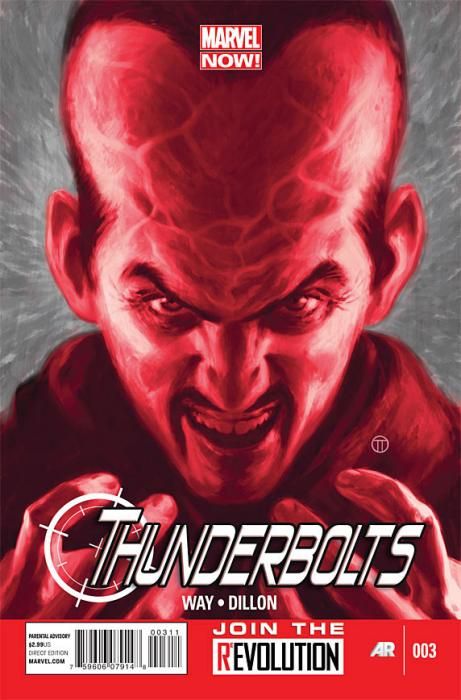In "Thunderbolts" #3 by Daniel Way and Steve Dillon, the black ops team goes deeper into their first mission. Way's plot flips back and forth between the two settings, Kata Jaya and Madripoor, revealing information at a quick clip, with the two sets of characters converging neatly right before the ending cliffhanger.
It makes sense for Way to pair Deadpool and Red Hulk in the opening scene. As the leader, Red Hulk has the most information, and out of the four others, Deadpool is the most skilled at extracting information through means other than force. Wade Wilson is no silver-tongued spy, but his constant chatter has a use beyond nettling his opponents, and in "Thunderbolts" #3, he squeezes out information and some laughs, as he always does.
Way writes good dialogue for the always talkative Deadpool. Not everyone is a fan of the Merc with a Mouth, but in "Thunderbolts" #3, his presence is provides the only light-hearted notes to a brutal and grim atmosphere and collection of personalities.
Way doesn't whitewash the team members or their mission and it makes for some morally disturbing, uncomfortable scenes. Venom seems like a sociable regular guy next to Punisher, who clarifies "that's not what I do" when a resistance fighter pleads with him not to leave. Building a democracy is harder, less glorious work than destabilizing a regime, if history is any judge. In earlier issues of "Thunderbolts," Red Hulk made it clear that his team won't be around for the "rebuilding the country" phase if it comes to that. Way does devote panel time to two of the resistance fighters, giving them a place in their own war and some character development, especially the woman who gets crowned as "squad leader" by Punisher.
Besides the uneasy morality, there's quite a bit of brain-splattering However, it's no "Preacher," despite Steve Dillon's artwork, because the hero of that title was always morally pure and bright, in the tradition of a Western. "Thunderbolts" is more like DC's "Suicide Squad," except it's non-government-sanctioned, and every team member is a heavy-hitter that has headlined their own book or miniseries before. Also, since the team consists of solo villains and loners, "Thunderbolts" has none of the usual team dynamics of a family and it may never achieve that.
Dillon's facial expressions are the same for jaw-clenching, steely-eyed Elektra, Venom, Punisher and Red Hulk. Deadpool is arguably the most physically expressive character and Dillon does a lot with Deadpool's body and face even though they are completely covered by his costume. Dillon's timing panel to panel is excellent, especially for the scene in which Deadpool says, "I think some people are just born like that." The silent panel in which Red Hulk and Deadpool look at each other and then both move on is brilliantly loaded with dramatic irony and black humor.
However, despite the strong pacing and Way's tackling the challenge of a team of tight-lipped killers, "Thunderbolts" is still missing something. Aside from Deadpool, the team members barely interact with each other or the oppressed people whose revolution they have co-opted. Despite Way and Dillon's respective skills, "Thunderbolts" has a weird aftertaste because no one in this comic is happy except the perennially cheerful Deadpool. This mood contributes to a Marvel NOW! title that has some chops but is off in tone, showcasing brutality without passion, efficiency without soul.

